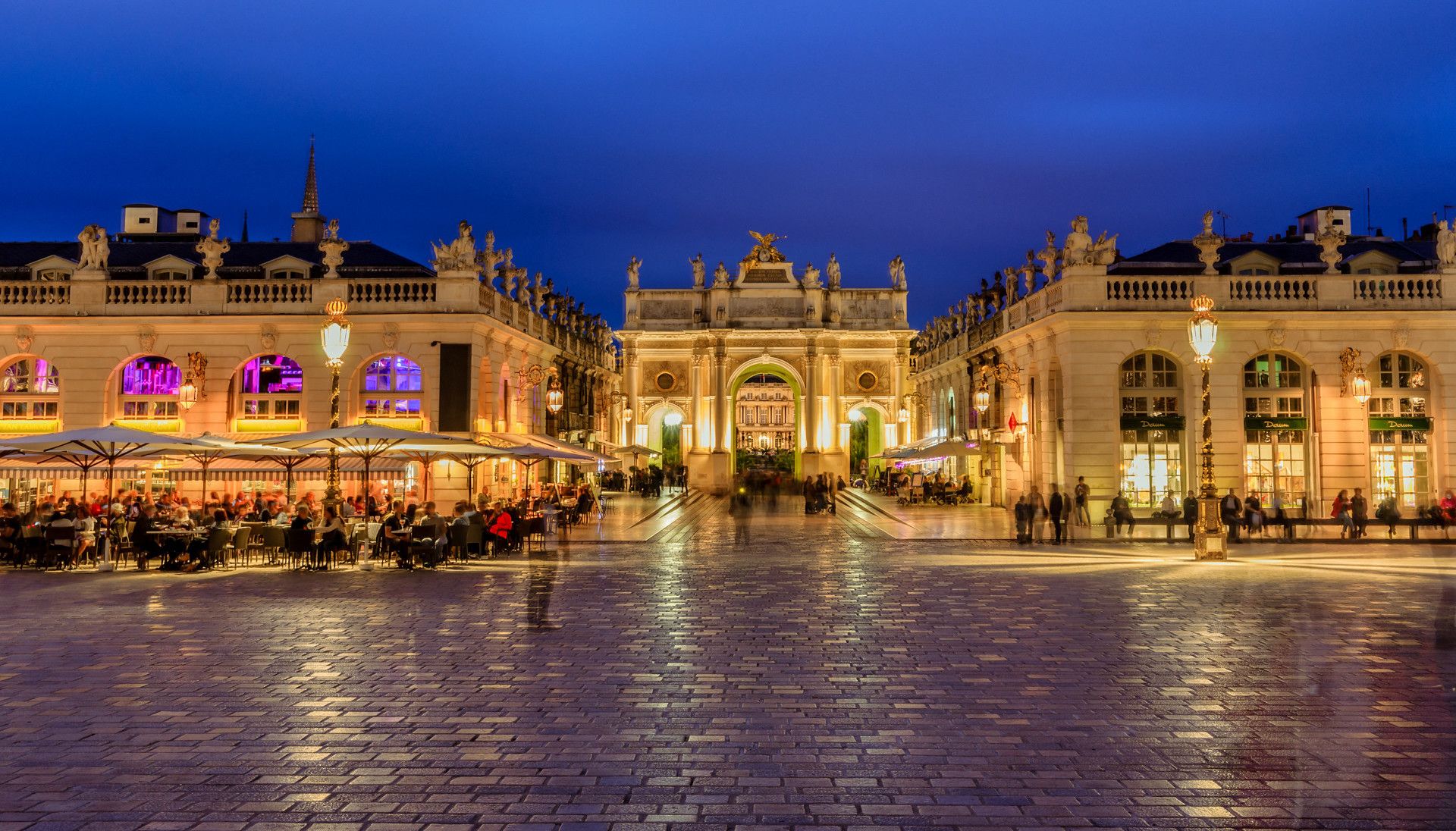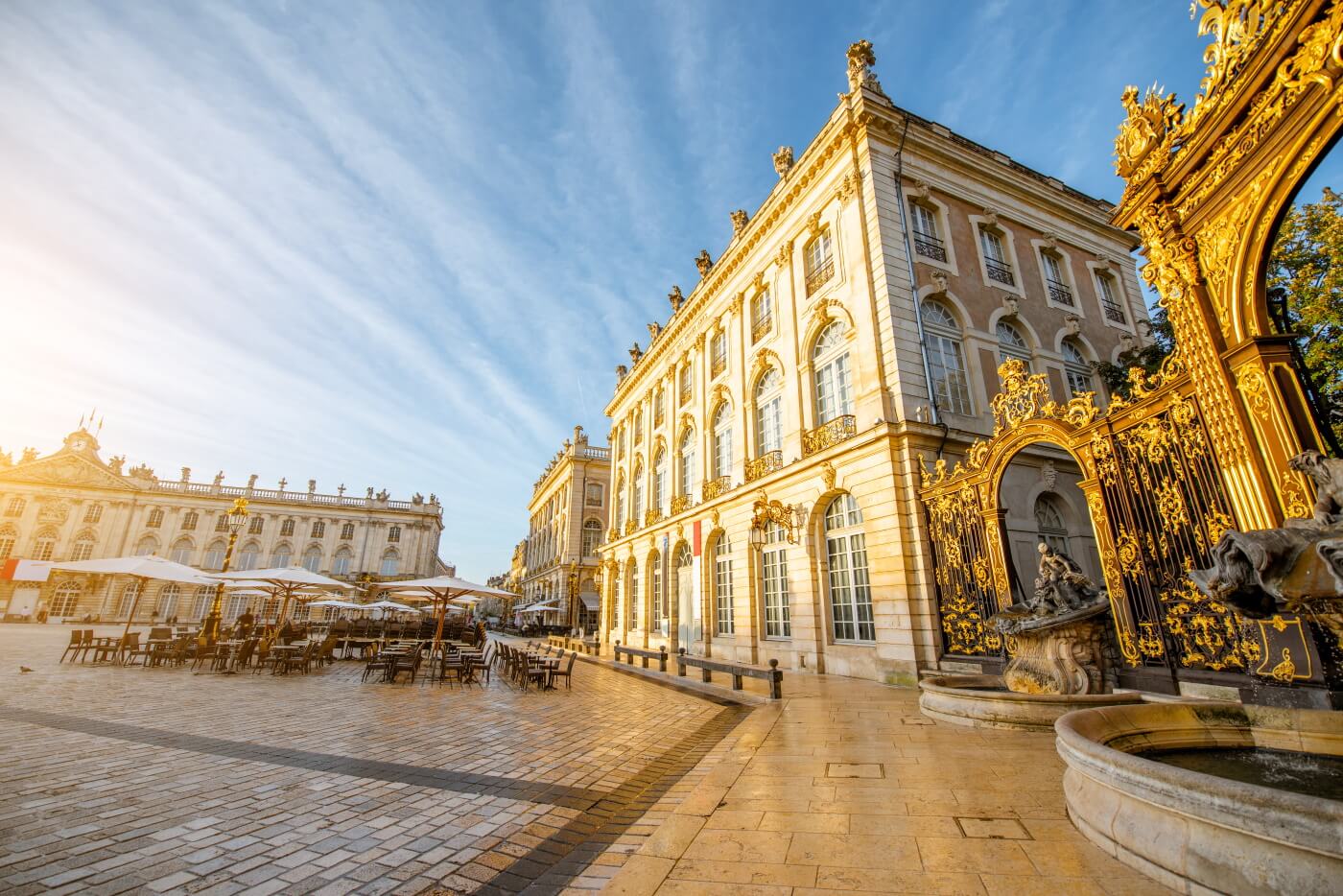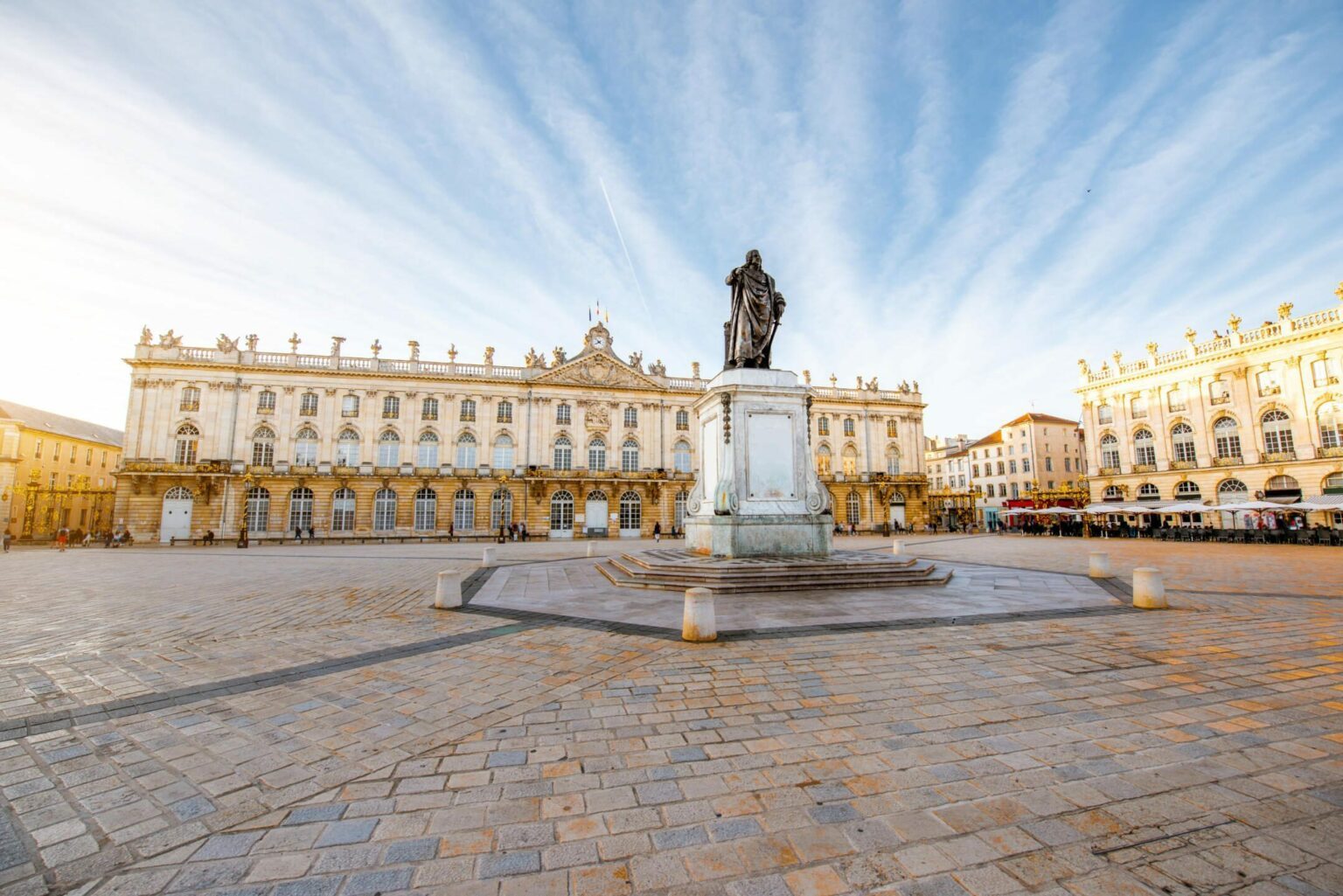Discover Nancy, France: A Jewel Of Lorraine's History & Charm
**Nestled in the heart of northeastern France, a city of remarkable beauty and historical significance awaits intrepid travelers and history enthusiasts alike. This is Nancy, a vibrant urban center that seamlessly blends centuries of rich heritage with a dynamic, modern pulse. From its grand, UNESCO-listed squares to its charming medieval alleys, Nancy offers a captivating journey through time, inviting visitors to uncover its many layers of allure.** A major French university centre, with over 47,000 students, Nancy buzzes with youthful energy, adding a contemporary vibrancy to its ancient foundations.
Often overshadowed by more famous French destinations, Nancy holds its own as a cultural powerhouse and an architectural marvel. It was the capital of the Duchy of Lorraine, a powerful independent state, before its annexation by France under King Louis XV in 1766. Even after this pivotal moment, Nancy maintained its status as a provincial capital, ensuring its continued importance and development. Let's explore the best things to do in Nancy, delve into its fascinating past, and discover why this city is a truly unmissable destination.
Table of Contents
- Unveiling Nancy's Rich History: From Duchy to French Capital
- Exploring Nancy's Distinct Quarters: Ville Vieille vs. Ville Neuve
- Top Things to Do in Nancy: A Traveler's Guide
- Nancy: A Thriving University Hub
- Culinary Delights and Local Flavors of Nancy
- Navigating Nancy: Practical Tips for Visitors
- Why Nancy is a Must-Visit Destination in Northeastern France
- Planning Your Trip to Nancy: Best Times to Visit
Unveiling Nancy's Rich History: From Duchy to French Capital
The story of Nancy is deeply intertwined with the history of Lorraine, a region that has long been a crossroads of European cultures and powers. For centuries, Nancy served as the proud capital of the independent Duchy of Lorraine, a significant political entity that maintained its sovereignty amidst the larger kingdoms of France and the Holy Roman Empire. This period of independence, particularly during the Renaissance, saw Nancy flourish as a center of art, culture, and power, leaving behind a legacy of impressive architecture and a distinct regional identity.
A pivotal moment in Nancy's history arrived in 1766 when the Duchy of Lorraine was formally annexed by France under the reign of King Louis XV. This annexation marked the end of an era, transforming the independent duchy into a French province. However, Nancy's importance was not diminished; it was maintained as the capital of this new province, ensuring its continued administrative and cultural prominence within the French kingdom. This transition, far from being a decline, ushered in a new period of urban development and artistic patronage, largely thanks to the last Duke of Lorraine, Stanislas Leszczynski, who became the King of Poland and later the Duke of Lorraine for life. His vision and patronage were instrumental in shaping the city's most iconic landmark.
The Grandeur of Place Stanislas
No discussion of Nancy's history or beauty is complete without highlighting Place Stanislas, a magnificent 18th-century square that stands as a testament to the city's golden age. Commissioned by Stanislas Leszczynski, this grand square, along with Place de la Carrière and Place d'Alliance, forms a stunning architectural ensemble that was designated a UNESCO World Heritage site in 1983. It was designed to link the old medieval town (Ville Vieille) with the new city (Ville Neuve) that was developing, symbolizing a bridge between past and future.
Place Stanislas is a masterpiece of classical French architecture, characterized by its harmonious proportions, elegant facades, and exquisite gilded wrought-iron gates crafted by Jean Lamour. The central statue of Stanislas Leszczynski himself presides over the square, surrounded by fountains and the impressive Hôtel de Ville (City Hall) and the Musée des Beaux-Arts. Walking through Place Stanislas is like stepping onto a grand stage, where history whispers from every stone and the sheer beauty of the design captivates the senses. It's a living museum, a vibrant public space where locals and visitors alike gather, celebrating the city's enduring legacy. The square's meticulous preservation and its role as the city's heart truly embody the expertise and authoritative historical narrative that Nancy proudly presents.
- Charli Damelio Feet
- Dafne Keen Net Worth
- Danny Pino Wife
- Tyler Perrys Personal Life
- Becca Bloom Real Name
Exploring Nancy's Distinct Quarters: Ville Vieille vs. Ville Neuve
Nancy is a city of intriguing contrasts, beautifully exemplified by its two main historical quarters: the ancient Ville Vieille and the classical Ville Neuve. While the Ville Neuve often garners significant attention due to its UNESCO-listed squares and grand 18th-century architecture, it would be a mistake to overlook the Ville Vieille. Each district offers a unique atmosphere and a distinct journey through different periods of Nancy's evolution, showcasing the city's rich architectural tapestry.
The Allure of the Ville Vieille (Old Town)
Don't skip over the Ville Vieille (Old Town) when you visit Nancy. This medieval quarter is a trendy neighborhood full of historic landmarks and a palpable sense of the past. Its narrow, winding cobblestone streets, timber-framed houses, and hidden courtyards transport you back to the time of the Dukes of Lorraine. Here, you'll find remnants of the city's fortifications, such as the impressive Porte de la Craffe, one of the few surviving gates of the medieval city walls.
The Ville Vieille is not just a collection of old buildings; it's a living, breathing part of Nancy. It's home to charming boutiques, traditional restaurants, and lively bars, making it a popular spot for both locals and tourists seeking an authentic Nancy experience. The Ducal Palace, now home to the Musée Lorrain, is a key landmark in this area, offering insights into the history and art of Lorraine. Exploring the Ville Vieille provides a delightful contrast to the more formal elegance of the new town, revealing the organic growth and enduring charm of Nancy through the centuries. Its vibrant atmosphere, combined with its historical depth, makes it an essential part of understanding the city's identity.
The Modern Elegance of the Ville Neuve
While the Ville Vieille offers a glimpse into Nancy's medieval past, the Ville Neuve represents its Enlightenment-era expansion and classical grandeur. This "new city" was meticulously planned and constructed in the 18th century, primarily under the patronage of Stanislas Leszczynski, to create a more organized and aesthetically pleasing urban landscape. The star of the Ville Neuve is undoubtedly Place Stanislas, but the surrounding streets and squares also contribute to its distinctive character.
The architecture in the Ville Neuve is characterized by its uniform facades, grand boulevards, and a sense of spaciousness that contrasts sharply with the winding lanes of the old town. This area is home to numerous public buildings, museums, and upscale shops, reflecting its role as a center of civic life and commerce. The deliberate planning and execution of the Ville Neuve showcase a period of architectural ambition and a desire to create a city that was both functional and beautiful. It's a testament to the visionaries who shaped Nancy into the elegant city it is today, offering visitors a profound appreciation for 18th-century urban design.
Top Things to Do in Nancy: A Traveler's Guide
When planning your visit to Nancy, France, you'll find a wealth of activities and attractions to fill your itinerary. The city caters to diverse interests, from history buffs and art lovers to those simply seeking a charming French escape. To get a sense of what fellow travelers enjoy, you can see TripAdvisor's 84,257 traveler reviews and photos of Nancy tourist attractions, which provide a comprehensive overview of popular spots and hidden gems. Whether you're looking for what to do today, this weekend, or in July, Nancy offers an array of options.
Beyond the iconic Place Stanislas, which is a must-see at any time of day or night, consider a leisurely stroll through Parc de la Pépinière, a vast green oasis adjacent to Place Stanislas. This former ducal nursery offers beautiful gardens, a rose garden, a small zoo, and ample space for relaxation and picnics. It's a favorite among locals and provides a refreshing break from urban exploration. For those interested in the city's unique artistic heritage, a visit to the Musée de l'École de Nancy is essential, showcasing the distinctive Art Nouveau movement that flourished here at the turn of the 20th century.
Cultural Gems and Artistic Delights
Nancy's cultural scene is as rich and varied as its history. The Musée des Beaux-Arts, located right on Place Stanislas, houses an impressive collection ranging from European paintings (including works by Caravaggio and Rubens) to contemporary art, alongside a fascinating basement displaying the former fortifications of the city. For a deeper dive into regional history and folklore, the Musée Lorrain, housed in the Ducal Palace and the former Couvent des Cordeliers, offers extensive collections of archaeological finds, medieval art, and traditional Lorraine crafts.
Beyond traditional museums, Nancy is a city that celebrates art in its everyday fabric. The legacy of the École de Nancy, with its distinctive Art Nouveau style, can be seen in various buildings throughout the city, from private residences to public structures. Taking a self-guided walking tour to discover these architectural masterpieces is a rewarding experience for any art enthusiast. The city also hosts numerous festivals and cultural events throughout the year, especially in the warmer months, ensuring there's always something vibrant happening. This commitment to culture solidifies Nancy's reputation as a significant artistic hub in France.
Nancy: A Thriving University Hub
Beyond its historical grandeur and artistic flair, Nancy is also a major French university centre, boasting over 47,000 students. This significant student population injects a youthful, dynamic energy into the city, creating a vibrant and cosmopolitan atmosphere. The presence of multiple higher education institutions, including the Université de Lorraine, contributes significantly to Nancy's intellectual and cultural landscape.
The large student body influences many aspects of city life, from its bustling café culture and diverse nightlife to its innovative research and development initiatives. Students from various backgrounds and nationalities contribute to a lively, multicultural environment, making Nancy a welcoming place for young people and a hub for new ideas. This academic vitality ensures that Nancy remains forward-looking and continuously evolving, balancing its deep historical roots with a keen eye on the future. The sheer number of students also supports a thriving economy, with numerous services and businesses catering to the needs of this substantial demographic. This blend of ancient charm and youthful vigor makes Nancy a truly unique French city.
Culinary Delights and Local Flavors of Nancy
A visit to Nancy would be incomplete without indulging in its delightful culinary offerings, which reflect the rich gastronomic traditions of Lorraine. The region is renowned for its hearty and comforting dishes, as well as delicate sweet treats that have gained national recognition. When in Nancy, you must sample the famous macarons de Nancy, distinct from their Parisian counterparts, these are chewy, almond-based cookies that have been made in the city for centuries, often attributed to the Sisters of the Dames du Saint-Sacrement.
Another iconic sweet treat is the Bergamotes de Nancy, hard candies flavored with bergamot essence, offering a unique citrusy aroma and taste. For something more savory, while Quiche Lorraine is a regional staple across Lorraine, finding an authentic, homemade version in Nancy is a true delight. The city's markets, like Marché Central, are excellent places to discover local produce, cheeses, and charcuterie, offering a genuine taste of the region. Nancy's vibrant restaurant scene caters to all tastes, from traditional brasseries serving classic French fare to modern eateries experimenting with local ingredients. The city's numerous cafés also provide perfect spots to enjoy a coffee and people-watch, soaking in the local atmosphere.
Navigating Nancy: Practical Tips for Visitors
Exploring Nancy is remarkably easy, making it a very accessible destination for travelers. The city center, where most of the main attractions are located, is compact and highly walkable. You can easily stroll between Place Stanislas, the Ville Vieille, and the Parc de la Pépinière on foot, allowing you to fully appreciate the city's charming streets and architectural details. For longer distances or when venturing outside the immediate city center, Nancy has an efficient public transportation system, including trams and buses, operated by Stan.
Accommodation options in Nancy range from luxurious hotels near Place Stanislas to charming boutique hotels in the old town and more budget-friendly options further afield. It's advisable to book in advance, especially during peak tourist seasons or major events. While French is the primary language, you'll find that many people in the tourism sector, especially in hotels and major attractions, speak English. However, learning a few basic French phrases will always enhance your experience and is greatly appreciated by locals. Nancy is generally a very safe city, but as with any urban area, it's wise to be aware of your surroundings, especially at night.
Why Nancy is a Must-Visit Destination in Northeastern France
Nestling in the Côtes de Moselle, in a valley surrounded by hills, Nancy's picturesque location only adds to its appeal as a premier destination in northeastern France. It is a city that truly offers something for everyone, seamlessly blending its profound historical narrative with a lively contemporary spirit. From the grandeur of its UNESCO-listed squares to the intimate charm of its medieval old town, Nancy provides a rich tapestry of experiences that are both educational and deeply enjoyable.
The city's commitment to preserving its heritage, evident in the meticulous upkeep of its architectural masterpieces and the vibrant life within its historic quarters, makes it an exemplary model of urban preservation. Yet, Nancy is far from being a static museum; it is a dynamic university city, pulsating with the energy of over 47,000 students, ensuring a constant flow of new ideas, cultural events, and a youthful ambiance. This unique combination of historical significance, artistic innovation (particularly the Art Nouveau movement), and a lively student population creates a distinct character that sets Nancy apart. It’s a city where every corner holds a story, every street invites exploration, and every visit leaves a lasting impression of beauty, history, and vibrant life.
Planning Your Trip to Nancy: Best Times to Visit
Deciding when to visit Nancy can significantly enhance your experience, as the city offers different charms throughout the year. The data suggests finding what to do today, this weekend, or in July, highlighting that summer is a popular time. Indeed, July and August are excellent months to visit Nancy. The weather is generally warm and pleasant, perfect for exploring the city's outdoor attractions like Place Stanislas and Parc de la Pépinière, and enjoying al fresco dining. Many cultural events and festivals also take place during the summer, including the famous "Rendez-vous Place Stanislas," a spectacular sound and light show projected onto the facades of the square, which runs nightly throughout the summer.
Spring (April to June) and early autumn (September to October) are also fantastic times to visit. The weather is mild, the tourist crowds are thinner than in mid-summer, and the city's parks and gardens are particularly beautiful, either in full bloom or displaying stunning autumnal colors. These shoulder seasons offer a more relaxed pace for exploring the city's museums and historical sites. Winter, while colder, can also be magical, especially around the Christmas markets in December, when the city is adorned with festive lights and decorations, offering a cozy and charming atmosphere. Regardless of the season, Nancy promises a memorable and enriching travel experience.
Conclusion
Nancy stands as a true gem in northeastern France, a city that beautifully encapsulates centuries of history, architectural brilliance, and a vibrant modern spirit. From its origins as the proud capital of the Duchy of Lorraine to its current status as a bustling university hub, Nancy has consistently reinvented itself while holding true to its unique identity. The grandeur of Place Stanislas, the medieval charm of the Ville Vieille, and the artistic legacy of the École de Nancy are just a few of the many reasons to explore this captivating destination.
We hope this guide has inspired you to discover the remarkable beauty and historical significance that Nancy offers. Whether you're drawn by its UNESCO World Heritage sites, its lively student atmosphere, or its delicious local flavors, Nancy promises an enriching and unforgettable journey. So, why not plan your trip to Nancy today? Explore its streets, delve into its past, and experience the unique blend of tradition and dynamism that makes this city truly special. Share your thoughts in the comments below or share this article with fellow travel enthusiasts who might be looking for their next great adventure in France!
- William And Rose Hanbury Baby
- How Tall Is Macron
- Twitter Fred Guttenberg
- George Clooney Dead
- Javier Bardem Children

Visitez la ville de Nancy - Château De Morey

Wat te doen in Nancy: 10 tips! | Wereldreizigersclub

Que voir et que faire à Nancy ? Voici 12 visites incontournables